Magpie Goose
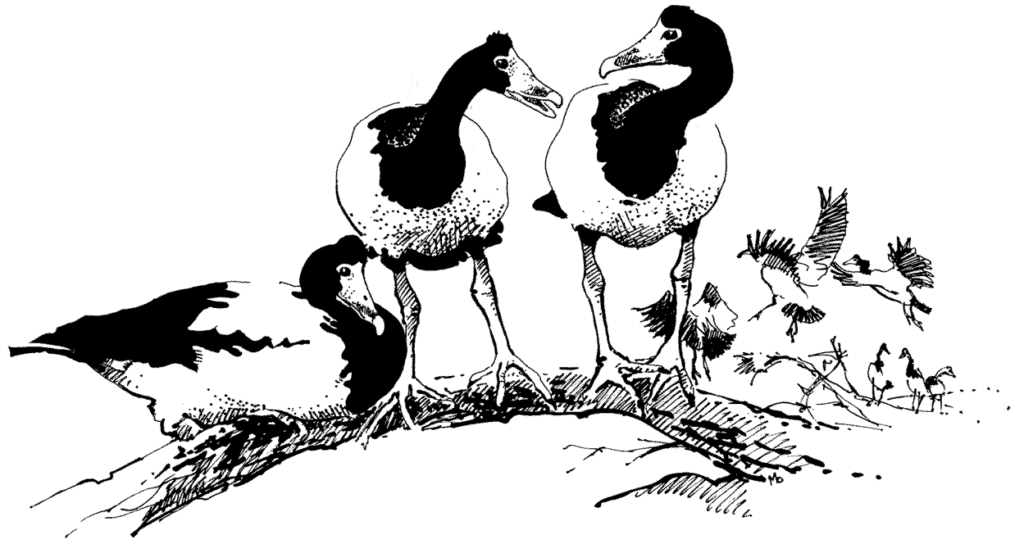
At home in northern Australia and southern New Guinea, wild Magpie Geese nest in February, which is the middle of the wet season.
These tall birds are reasonably tame in the wild and did not fare well when hunters took advantage of this nature. They are now mostly protected in their Australian homeland, but still face threats from loss of their wetland habitats — another consequence of increasing human population.
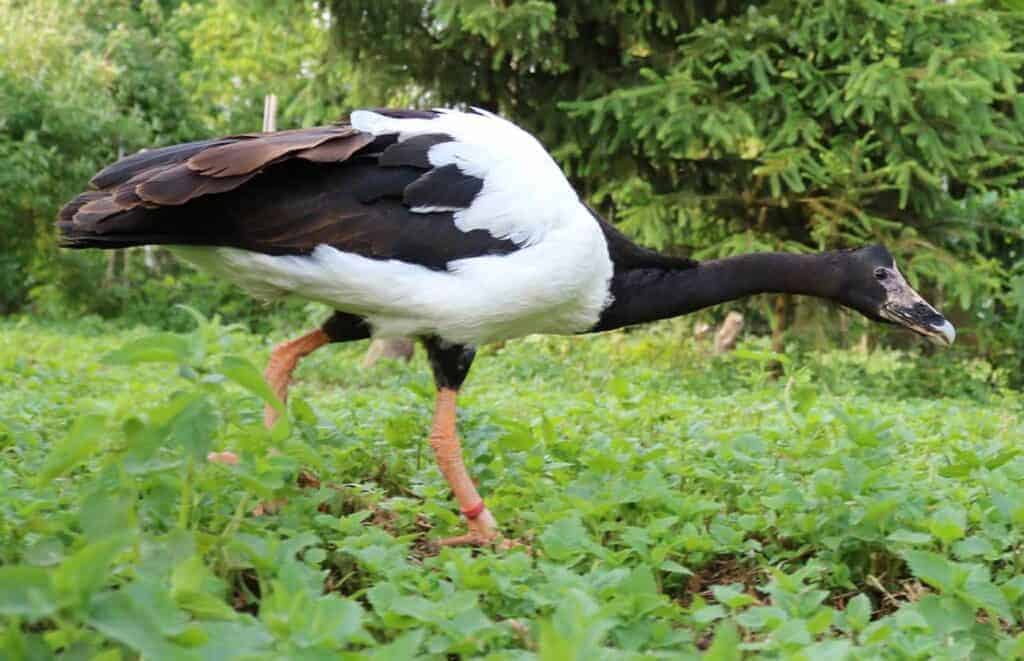
The Magpie Goose is not well represented in collections but can be seen at several open to the public including WWT centres. Breeding success at Slimbridge is good. However, captive birds can be fickle and take many years to start breeding despite being sexually mature at 2–3 years. Increasing numbers of private collections are succeeding now with these magnificent birds. They are long-lived: 32 years has been recorded in the wild.
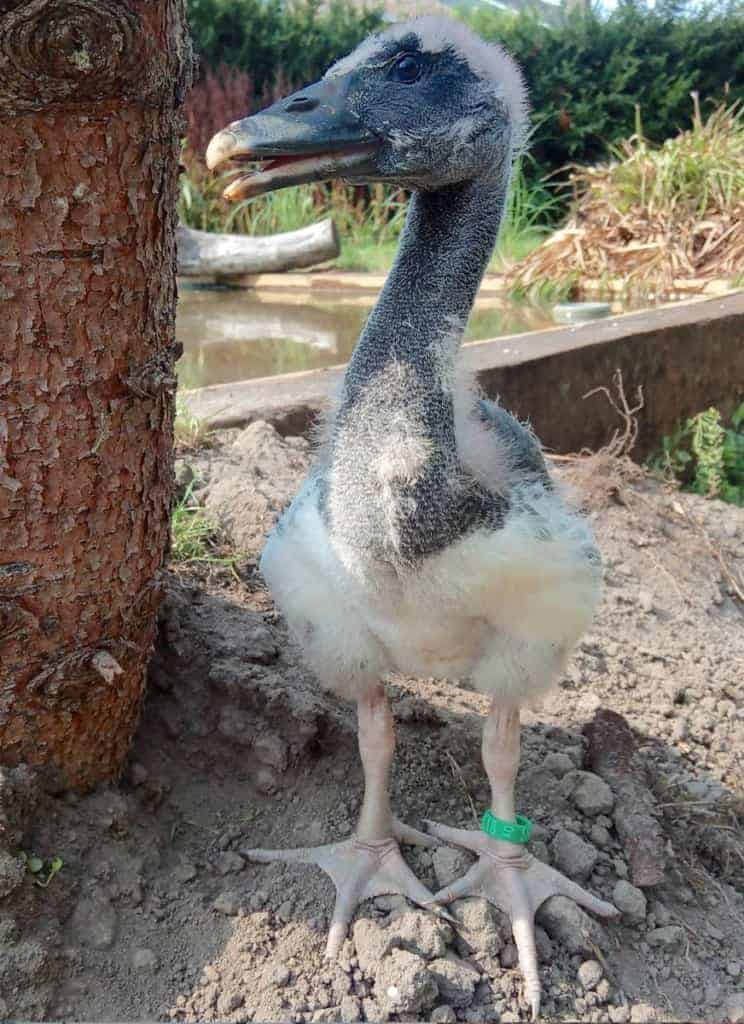
Anseranas semipalmata
A loud honking voice and characteristic musky odour add to the charms of this, the oddest of wildfowl. You wouldn’t describe this bird as dapper; it always seems to have feathers awry and mucky bits here and there. However, it certainly has personality, and hand reared goslings will become extraordinarily tame.
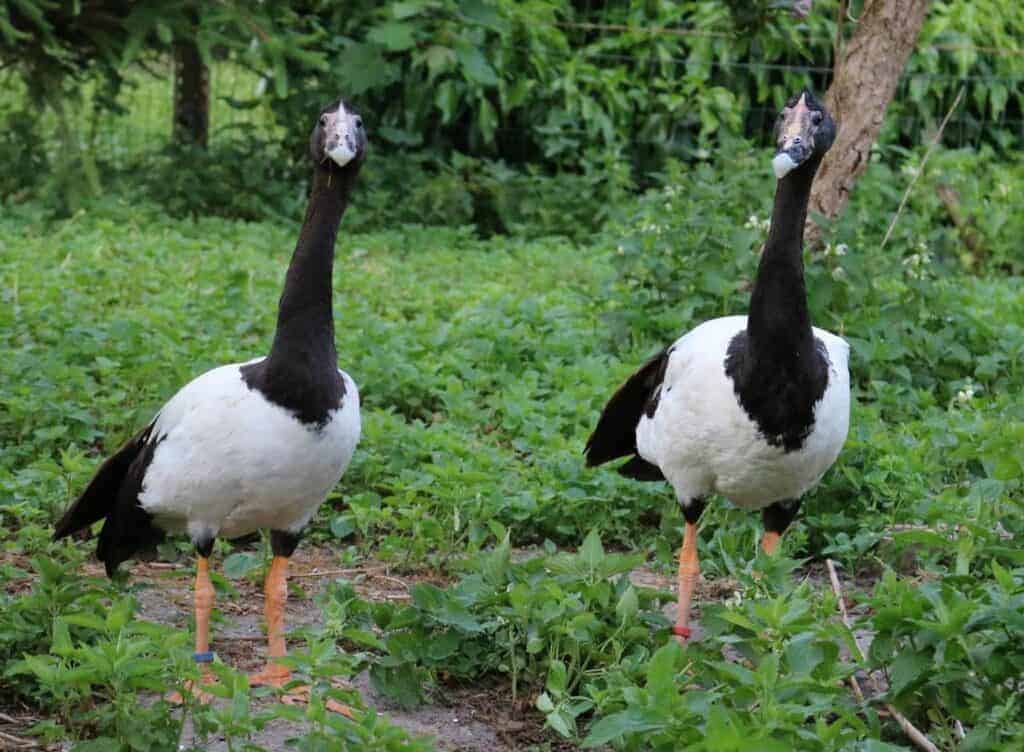
Standing tall at 90 cm and weighing two kilos, the Magpie Goose has a wholly black neck and head. Although the slightly hooked beak is quite small, an area of naked pink skin extending to the eye gives these birds a quirky look. The flight feathers are black and they sport a cute pair of black shorts, peeping through the white belly feathers — uncharacteristically chic. The curious bump on the forehead gets bigger as the bird ages and in males also tends to be bigger.
Long-lived and gregarious, the Magpie Goose loves aquatic vegetation. They also love to dig up their enclosure, being equipped with tough beaks enabling them to rootle in the hardest ground.
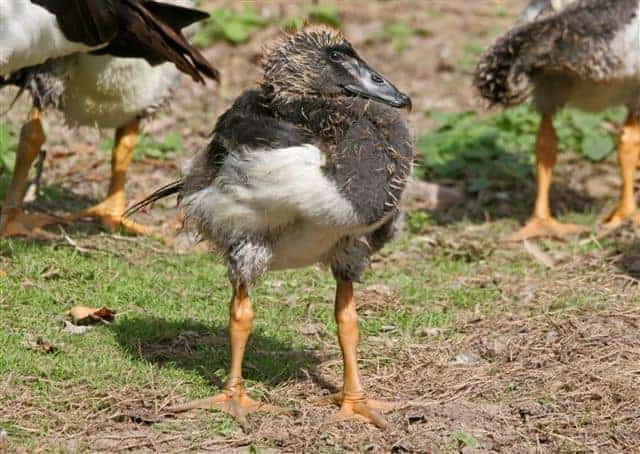
The male builds an open cup-shaped nest in a secluded place (but amongst a large colony) either on a floating platform of trampled weeds or in tree tops overhanging water. Pairs of geese mate for life but the male often takes a second wife, the trio living amicably together. Clutch sizes may be up to 16 when two females share a nest, 5–8 being average for one bird. All the adults will share in the incubation and brooding of the young.
FURTHER READING
DataZone, BirdLife Magpie Goose Anseranas semipalmata
eBird, Magpie Goose Anseranas semipalmata https://ebird.org/species/maggoo1
Harteman Wildfowl, Magpie Goose Anseranas semipalmata https://harteman.nl/anseranassemipalmata
Johnsgard, P. A. Ducks, Geese and Swans of the World, Digital Commons@University of Nebraska – Lincoln (2010) Tribe Anseranatini.
Share this page